Epilepsy with Eyelid Myoclonia (EEM) is a rare type (1% of epilepsy cases) of generalised epilepsy with typical EEG response and several seizure types. It was formely known as Jeavons Syndrome. It accounts for about 8% of idiopathic generalised epilepsy. It is distinguished by the distinct eyelid myoclonus response with or without absence, triggered by eye closure and light or sun.
Developmental history is often normal, although mild to moderate cognitive impairment has been reported in some cases. It is typically diagnosed in children between 2-14 years, but more usually in mid childhood, and affects twice as many girls than boys.
Sunflower Syndrome is a rare generalised epilepsy type in which a person is drawn to sunlight, or another light source, and photosensitive seizures occur with episodes of hand waving in front of the face or eyes. Sunflower Syndrome has also been reclassified as a subset of EEM. It is more common among females than males but less known than Jeavons Syndrome.
Symptoms
The essential feature is eyelid myoclonia, with or without typical absence seizures. These aeizures are induced by eye closure and all cases have photosensitivite response. A typical clinical description of eyelid myoclonia would be of brief, (under 6 seconds), but frequent myoclonic jerks of the eyelid and upward movement of the eyeballs with the head tilting back.
Where consciousness is lost briefly with eyelid myoclonia this is called eyelid myoclonia with absence. Generalised tonic clonic seizures may occur also usually infrequntly, usually in older children triggered by lack of sleep, flicker and bright light. Some 10% of cases may have febrile seizures. Focal seizures are not seen in this condition.
Seizures described as “self-induced” have been attributed to Sunflower Syndrome. Often reported in a subgroup of children, some of whom may have cognitive difficulties, these seizures show photic induced eyelid myoclonia, with or without absences or myoclonic seizures, in children described as showing light seeking and handwaving behaviours.
Eyelid myoclonia status (prolonged eyelid myoclonia) has been reported in up to 20% of cases.
Cause
The cause is often unknown and genetic testing is often normal. However, in people without encephalopathy it is thought to have a genetic basis as 20% of people with EEM have a family history of idiopathic generalised epilepsy, and roughly half have a family history of genetic epilepsy with febrile seizures plus (GEFS+). In people with encephalopathy some gene variants identified include SYNGAP1, NEXMIF, and CHD2.
Diagnosis
EEM can be confirmed with EEG and video EEG which can reveal the characteristic generalised photosensitive response to intermittent photic stimulation and eye closure. This respnse may be seen with or without typical absences and is also brought on by hyperventilation. Elimination of light can stop the seizures and abnormal ictal EEG pattern. Imaging is typically normal and may not be required for diagnostic purposes. Due to it’s specific features EEM can usually be readily distinguished form other conditions, but can present as similar to tics and myoclonic absences or other myoclonic seizures that occur in other epilepsy syndromes.
Treatment
EEM is treated with ASM’s including sodium valproate, levetiracetam, zonizamide, topiramate and clobazam. Some children may benefit from the Ketogenic Diet and wearing special coloured lenses such as Z1 lenses and hats or visors.
Outlook
The overall outlook for EEM is positive where absences and generalised tonic clonic seizures seizures respond to ASMs but eyelid myoclonia may be more resistant to treatment. EEM remains a lifelong condition for epilepsy management.
Further Information
- Learn more by visiting the 'Epilepsy Diagnosis' website
- Learn more by visiting the 'Orphanet' website
- Learn more by visiting the 'Massachussetts General Hospital for Children
